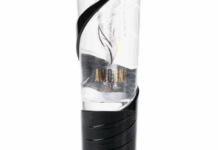Why emotional safety for actors is the next frontier in film labor — and how PEM-style training could reshape union standards on set.
Actors in Hollywood and beyond are used to long days, tight turnarounds, and scripts that demand everything. But as talk of intimacy coordinators becomes the norm, a deeper shift is starting: emotional safety for actors.
On the surface, it sounds simple.
In practice, it could change how film labor works forever. The Perdekamp Emotional Method (PEM) treats emotion as a biological, trainable system, not a mystery or a weapon. For unions, showrunners, and producers who actually care about working conditions, emotional safety for actors isn’t a soft add-on. It’s the next frontier of real workplace reform.
From intimacy coordinators to emotional safety for actors
In the last few years, intimacy coordinators have reshaped how we handle sex scenes. No more “just go with it” on a cold set. There are protocols, consent, and choreographed moves.
PEM pushes that same logic into the nervous system. Co-founder Sarah Victoria explains the core promise:
“everyone knows you can be emotionally intense and safe at the same time.”
Sarah Victoria
PEm master instructor
Instead of asking actors to dig into old wounds, PEM teaches them to use very specific physical “access points” to trigger emotions in the body while the mind stays in the room. They can play terror in a flooded backlot tank and still go home, cook dinner, and joke with friends. That mix of craft and care has real relatability and a sense of humor baked in; it respects that artists are also people who like good wine, street tacos, and a little late-night flavor.
Most importantly, it treats safety as infrastructure, not vibe.
Why emotional safety for actors is a labor issue, not a luxury
Old-school stories still haunt the industry: directors who bully, scream, or use “psychological warfare” to get a performance. PEM’s Stephan Perdekamp started from the exact opposite place. As he puts it, “The actor doesn’t have to sacrifice their health in order to give insights to the audience.”
“The actor doesn’t have to sacrifice their health in order to give insights to the audience.”
Stephan Perdekamp
That’s not just an acting note. That’s a working-conditions note.
Think about burnout.
PEM describes what happens when an actor spends days in a fake crisis while the nervous system believes it’s real. The body is stuck in fear and aggression loops, burning energy even when the camera isn’t rolling. One actor they mention spent an entire weekend staying in a crying state because her big scene got pushed from Friday to Monday.
She delivered, but in her world that was torture.
In any other upscale profession — a lawyer, a chef, a creative director — that would be called what it is: unsafe work. If unions can bargain for turnaround times and stunt pads, they can bargain for emotional pads too. Emotional safety for actors belongs right next to rest periods and pay rates in collective agreements.
And yes, there’s room in union language. Workers are whole people. They want fair conditions and a fun-loving set with good coffee, playlists with flavor, and wrap drinks that don’t require three days of recovery.
PEM, science, and the flavor of a film set
PEM isn’t framed as wellness woo. It’s rooted in biology and the nervous system. Perdekamp describes how the body holds complex emotional “movement patterns” — fear, aggression, grief, lust — as physical programs. Actors learn to switch them on and off through trained access points, then release them so nothing gets stuck.
An Austrian study confirmed that when those points are used, the body shows real emotional responses — the same physical signatures researchers measure when someone is deeply moved or afraid. That gives unions and studios something solid to point to when they argue for new standards, instead of relying only on vibes or anecdotes.
This also answers a quiet fear many actors have: that technique will make them robotic. Sarah counters that PEM actually opens up creative range. You can be wild, surprising, and deeply human because you’re not busy fighting panic. You can lean into the fun-loving side of a scene — the messy breakup, the bittersweet party — with more flavor and less fear.
For an industry that runs on repeat takes and reshoots, the ability to access real emotion again and again without harm is gold. It’s also a serious bargaining chip.
What unions could do with PEM-style emotional safety
Film labor has always evolved in waves. First basic safety. Then stunts. Now intimacy coordination. Emotional safety for actors is the logical next wave.
Unions like SAG-AFTRA already handle issues of harassment, nudity, and consent. PEM-style approaches point toward a concrete emotional safety toolkit unions could push for:
-
Recognized emotional-safety training
Studios could be required to offer certified PEM-style workshops as part of prep, just as they offer stunt or intimacy training. -
Protected “release” time
If a shoot day includes extreme emotional work — torture scenes, self-harm, sexual violence — contracts could mandate short, structured release sessions before wrap. Not a five-minute “you good?” but actual, trained off-ramping. -
No coercive directing
Clear language can ban methods that rely on humiliation, surprise cruelty, or secret manipulation. If a method needs abuse to “work,” it doesn’t belong on a modern set. -
Standards for experiential jobs
PEM already trains actors for immersive experiences — haunted houses in LA, live events in Vegas, festival work in Germany. Union language could extend emotional safety rules to these gray-area gigs too, where the fun-loving public wants “real fear” but workers still deserve protection.
This is where labor, craft, and culture intersect. Emotional safety for actors can shape how the next generation of performers in Brooklyn, Echo Park, and Neukölln earns a living — with both security and flavor in their careers.
FAQ: Emotional safety for actors on modern sets
Q: What is the Perdekamp Emotional Method (PEM) in simple terms?
A: PEM is an acting and emotional-training method that works directly with the nervous system. Instead of using painful memories, actors learn physical access points that trigger emotions safely in the body. As Stephan says, “we can look into the human condition without disturbing another human condition.”
Q: Why is emotional safety for actors a labor and union issue?
A: When actors are pushed into real distress for long hours, it’s not just “commitment” — it’s a workplace risk. Emotional safety for actors is about setting standards so performers can do intense work without burnout or trauma, the same way stunt rules protect the body. That’s why PEM-style training could inform future union contracts.
Q: Is PEM only for performers, or can it help everyday people too?
A: PEM started with actors, but their team now works with “tens of thousands of students all over the world… for all different reasons,” including stress, anxiety, and burnout. The same tools that help a lead on a Berlin drama series can support a fun-loving restaurant owner in Atlanta or a tech worker in San Francisco who wants more balance.
SAG’s next contract line item
The industry has already accepted that no one should be thrown off a building without a harness or undressed without a plan. The next step is just as clear: no one should have to wreck their inner life for a close-up.
Emotional safety for actors gives unions, producers, and performers a shared language for that shift. PEM-style training shows it’s possible to be bold, intense, even deliciously fun-loving on screen — and still walk out of the studio in one piece. The question now is whether we, as an industry, are ready to ask for it, fight for it, and write it into the next round of deals.
Why emotional safety for actors is the next frontier in film labor — and how PEM-style training could reshape union standards on set.

















![Get Your Indie Movie Made (Responsibly): Jeff Caruso of Wrapbook Leads the AFM 2025 Film Finance Conversation [Exclusive Interview] American Film Market](https://dailyovation.com/wp-content/uploads/2025/11/AmericanFilmMarket2025-1-218x150.jpg)














